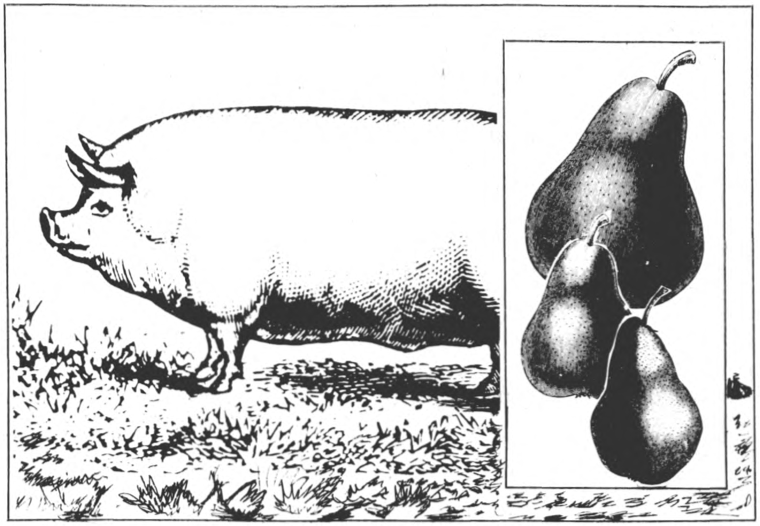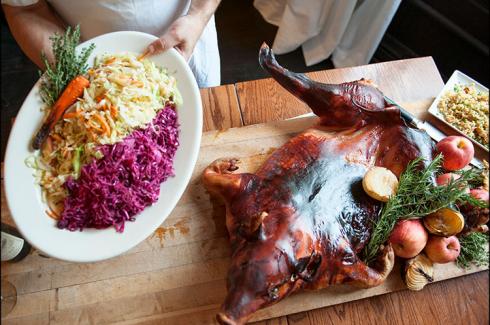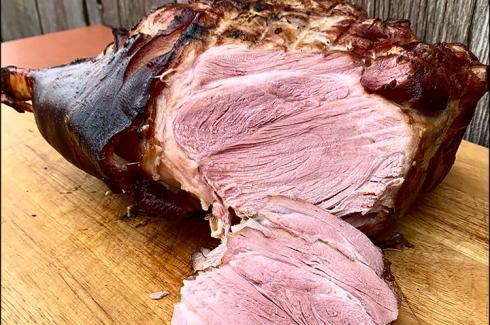“All that glitters is not gold” . . . and all that is gold does not glitter. The pig, that estimable creature, while no thing of beauty and generally not highly regarded as to character, nevertheless supplies some of the world’s best fare. The porker, from snout to tail, is perhaps the most utilitarian of all our domestic animals and yet is perhaps the least treasured of meats.
Roger Verge, a down-to-earther though a three-star chef of France, introduced a dish at his restaurant called “fricassee de pore jamaiquain" (Jamaican-styled pork chops) several years ago. It did not sell. Disappointed with the lack of success of this handsome dish, M. Verge decided to test his customers’ ingrained pork snobbery and changed the name to “grouet jamaiquain." The Swahili word for pork turned the trick and the dish was successful though the waiter pretended that the “grouet” was some kind of veal dish.
Pork tenderloin, besides making an elegant meal—even for guests—is both reasonable and quick to cook. The fillets are now widely available at good grocery stores. Here’s a surprising dinner — fancy enough for guests — that can be made in less than 30 minutes start to finish.
The fillet of pork entree is good all on its own, but is made a bit more ex? citing with an unusual embellishment. I have replaced the relentlessly served applesauce with my own idea: pears sauteed in butter. One quick- roasted fillet serves two people handsomely and is amazingly economical when one considers that there is no waste at all — no fat and no bone.
Fillet of Pork With Sauteed Pears
Rub the meat dry and insert very tiny thin slivers of garlic in about six tiny slits. Let rest at room temperature for 20 minutes if there is time (or do this in the morning and refrigerate until evening). If you can’t spare the half hour, roasting time will be five minutes longer and the result perhaps not so evenly palest pink. Preheat the oven to 425 degrees F.
Brown the pork fillet (after tying the thin end flap under, so that the roast is a neat cylinder) in butter in an iron skillet, salting and peppering as you rotate it. Put it into the center of the preheated oven for 15 minutes and then test with an instant-read thermometer which should read 150 F. One of the most imperishable and destructive notions in cooking lore is that pork must be incinerated to at least 170 F. to ward off dread trichinosis. The trichinae, in the remote possibility that there are any present, are destroyed at 137 F. Canned hams are required by US Department of Agriculture law to be sterilized by being heated only to an internal temperature of 140 F. People who would not dream of eating a faintly pink pork chop, tender and juicy, regularly gobble up these canned “hams.” And eat imported prosciutto as well — which is not cooked at all, though thoroughly cured. (Many people remain obstinately ignorant of most food facts — there are times I think folks really like myths more than truth.)
Rest the pork roast on a carving board in a warm place for five or ten minutes while you deglaze the roasting pan with a few spoonfuls of Madeira and a little fresh pepper.
Slice the meat into one-fourth-inch disks, arrange in overlapping circles, and pour the sauce over them. (Ideally, the slices should be turned in the skillet with the pan juices and Madeira before they are arranged, which is a little fussy but worth the trouble for just two servings.)
While the meat is roasting, peel, quarter, and core two ripe pears. Slice them medium-thick and turn them in a bit of lemon juice to prevent discoloring. Melt some butter in a non?stick skillet, add the pear slices and a meager sprinkling of light brown sugar. Saute over medium heat just until the pears are tender and the sugar and juices make a little syrup, about five minutes, closely watched. Set aside and reheat when the meat is done.





